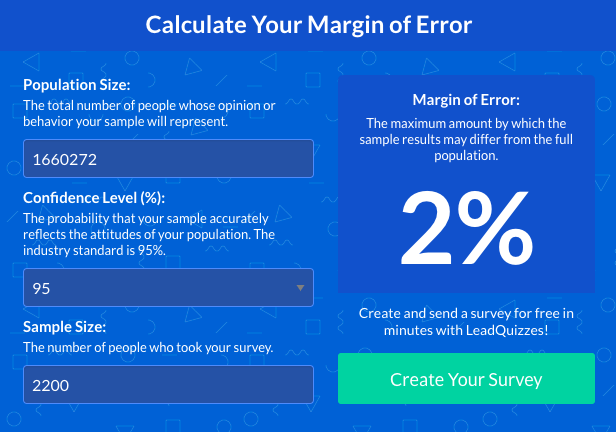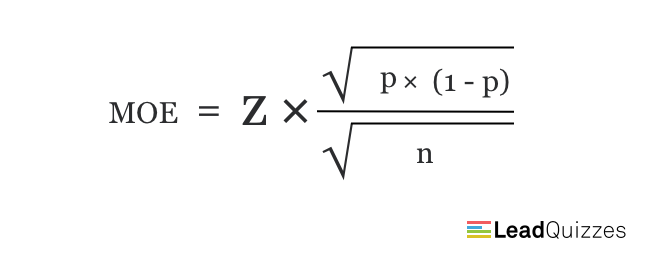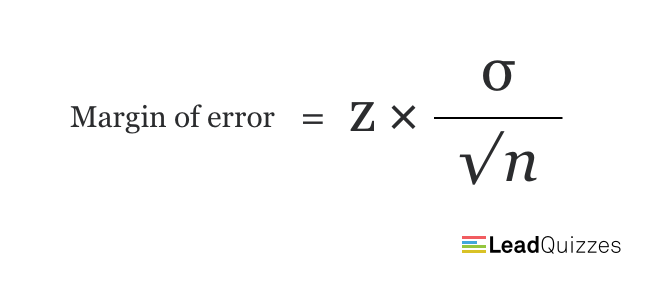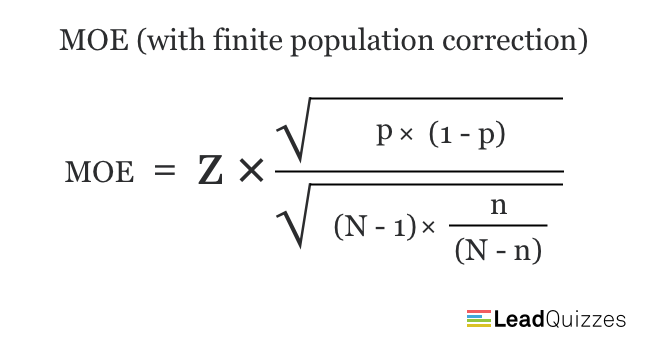Have you ever wondered how accurate your survey data really is?
Let’s face it – unless you survey every single person in a certain population, it’s improbable that your results will completely accurately represent the entire population you’re researching.
But the good news is that you can easily get a good idea of how close to (or far from) the 100% match you are by using our margin of error calculator.
Margin of error calculator
Calculate Your Margin of Error
When calculating the margin of error, you deal with three values: population size, sample size, and confidence level.
As you already have the explanations for each of the values given on the calculator itself (scroll a tiny bit up), I’ll just share a practical example here.
Let’s say you’re doing market research in order to decide between Design A and Design B for the new proposal for the official flag of the city of Phoenix, Arizona. In this case, your target audience would consist of all the people living there, so your population size would be 1,660,272.
(You can use the U.S. Census Bureau to find relevant stats related to US demographics.)
Let’s say 2,200 people filled out your survey. This is your sample size.
(If you need help calculating your sample size, try using our sample size calculator.)
The industry standard for confidence level is 95%. So if you’re not sure what to put here, consider this percentage to be the default value.
(Do not mistake confidence level for confidence interval. The latter is just another name for margin of error,.)
Ok, now that we have all the numbers, let’s type them in and let the margin of error calculator do its magic.

As you can see, the margin of error is 2%.
But what does this mean to your survey results?
What does margin of error mean for your survey?
Margin of error (sometimes also referred to as confidence interval) shows to which extent your survey results could differ from the actual views of the entire population. After all, you’re surveying only a sample of the total population.
The percentage you get after using the margin of error calculator shows how accurate your survey is. The smaller the percentage, the more confident you can be in the accuracy of your results. The bigger the percentage, the more reason you have to question the validity of your survey results.

Let’s go back to our example shown above.
Your survey results came in, and after analyzing the responses, you realize that 57% of the respondents prefer Option A.
With a margin of error of 2%, this means that somewhere between 55% and 59% of the entire population prefers this option. In other words, it’s safe to conclude that more than half of the population prefers Option A, and in a democratic selection process, we could declare the winning solution.
When to consider survey results potentially inaccurate
When looking to make important decisions based on the survey data you obtained, you need to make sure that the options you’re choosing from differ by more than the margin of error.

For example, if your survey results show the 52-48% answer ratio, while the margin of error is let’s say 6%, you shouldn’t consider it safe to make a confident decision based on these particular survey results.
How come? Well, this basically means that the first response could be representative of 46-58% of the entire population, while the second one could represent 42-54% of the total audience. See the potential overlap there?
In case this happens, the only real solution is to increase the sample size. In other words, get more people to take your survey.
Then do the math all over again.
If you have already tested our margin of error confidence interval calculator, you could see that it’s very straightforward – enter your numbers, click the button, and voila!
But what’s actually under the hood of our sleek number-cruncher?
How to calculate margin of error
There are actually two ways to calculate margin of error:
1. Get a degree in maths or statistics
So you know what all the variables below mean and then crunch the numbers manually using the following margin of error formula:

Ok, you don’t actually need a degree. But you’ll have to learn at least a bit. Here’s an explanation of all the variables used in the equation so you can better understand how it works:
- MOE – margin of error
- z – z-score, directly associated with the confidence level, depending on which it can have the following values:

- p – sample proportion (expressed as a decimal)
- n – sample size
- N – population size
You’ll also find the alternative margin of error formula variations such as the simplified one:

Where σ = population standard deviation.
Or an even more complex one:

But then again, why would you bother with formulas when you can calculate the margin of error with a single click?
This brings us back to the more sensible way to determine the margin of error:
2. Use the margin of error calculator at the top of this page
Much more convenient, isn’t it?
How to ensure the validity of your survey data
Any survey-based research is only effective as much as the data obtained is valid. And yet, many companies are making vital decisions based on unreliable survey data. Here’s what you can do to ensure the validity of your survey data.
1. Keep an eye on the margin of error
As you have learned in this post, knowing your margin of error can help you determine the accuracy of your current survey results and, if necessary, take action (increase sample size) to ensure you obtain valid data.
2. Don’t let bias creep into your surveys
Bias is to surveys what kryptonite is to Superman – a weak spot. That’s why you need to make sure you’ve done your best to prevent these 4 types of bias in research from negatively affecting the validity of your survey data.
3. Use a reliable survey maker
To be able to quickly make engaging surveys, use them to securely collect and organize data, and create accurate reports based on data analytics, you need to make sure you’re using our reliable survey maker.
LeadQuizzes makes every step of survey creation and data collection seem strategic and intuitive, while survey data and responses are at your fingertips within our comprehensive reporting dashboard.